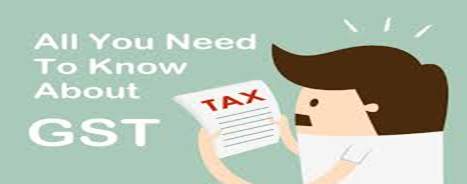GST stands for Goods and Services Tax. Many Indirect Taxes on the supply of goods and services have been replaced after this law came into existence. The GST Bill was in the discussion by the Government for more than two decades, but the bill was passed on 1st July 2017 by the Parliament of India.
After this tax was introduced, it became the topic of discussion for many both in good and bad ways. While some supported this move of the Government, some criticized it. In simple words, GST is a single tax which has replaced all indirect taxes; it includes all central and state indirect taxes (VAT, local tax, purchase tax, luxury tax, entertainment tax, service tax etc.). Well gst is a border concept and there are types of gst also. One of the term used is called as c gst meaning central goods and service tax.

Table of Contents
History of GST
In the history of the Indian Economy, GST is considered the most significant reform in the field of taxation. The GST reform is expected to be positive. In 2000, Atal Bihari Bajpayee formed a committee directed by Asim Dasgupta, an economist and then Finance Minister, to design the model of GST. Atal Bihari Bajpayee is considered the father of GST in India. After many sittings and lengthy debates, the bill finally came into effect on the midnight of 1st July 2017.
Types of GST in India
There are four types of GST
Central Goods and Services Tax (CGST)
It falls under the intermediate goods and service tax act 2016. It is charged for the supplies of goods and services within the state. The Central Government collects revenue.
State Goods and Services Tax (SGST)
It is charged for the supplies of goods and services within the state, but the revenue is paid to the State Government.
Integrated Goods and Services Tax (IGST)
IGST applies to the tax that is levied under the IGST act and works on the supply of services or goods in the case of interstate trade and commerce.
Union Territory Goods and Services Tax (UTGST)
UTGST refers to the tax that is levied on the supply of goods and services that takes place in the following five Union Territories of India. They are Andaman and Nicobar Islands, Lakshadweep, Dadra and Nagar Haveli, Daman and Diu, and Chandigarh. The UTGST is charged in addition to the Central GST.
GST Rate Slab in India
The GST tax structure can be categorized into four slabs- 5% GST rate slab, 12% GST rate slab, 18% GST rate slab and 28% GST rate slab. GST has been planned in such a way that all essential food items and services have been placed in the lower tax category while the luxury products and services fall in the category of higher tax.
- There is also an exempted GST rate slab, which means no tax. Under this category, falls the products for regular consumption which includes fresh fruits, vegetables, milk, curd, natural honey, flour, besan, bread, salts of all kins, jaggery, raw meat, fish, chicken, eggs, newspaper, jute, handloom, hotels and lodges below INR 1000 and so on.
- 14% of goods and services fall under a 5% rate slab. The items included in this slab are packaged food items, frozen vegetables, coffee, tea, spices, pizza bread, economy class air tickets, small restaurants, clothing below INR1000, and so on.
- 17% of goods come under the 12% rate slab category, which includes frozen meat products, cheese, butter, ghee, packaged dry fruits, clothing above INR 1000, and so on.
- Under 18% rate slab category falls 43% of goods and services, which includes pasta, biscuits, ice cream, jams, mayonnaise, camera, speakers, branded clothes, financial services, and so on.
- Under 28% rate slab category falls 19% of goods and services, which includes chewing gums, sunscreen, deodorants, shaving cream, aftershave, shampoos, water heater, washing machine, and so on.
Conclusion
GST is the replacement of all the indirect taxes that were previously there in India. Under GST, the tax is imposed on every point of sale. GST has removed the cascading effect on sale, and by removal of this effect, the cost of goods has been impacted. Before GST, there were many indirect taxes like Cess, VAT, Central Sales Tax, etc. and CGST, IGST, and SGST have replaced these all.


